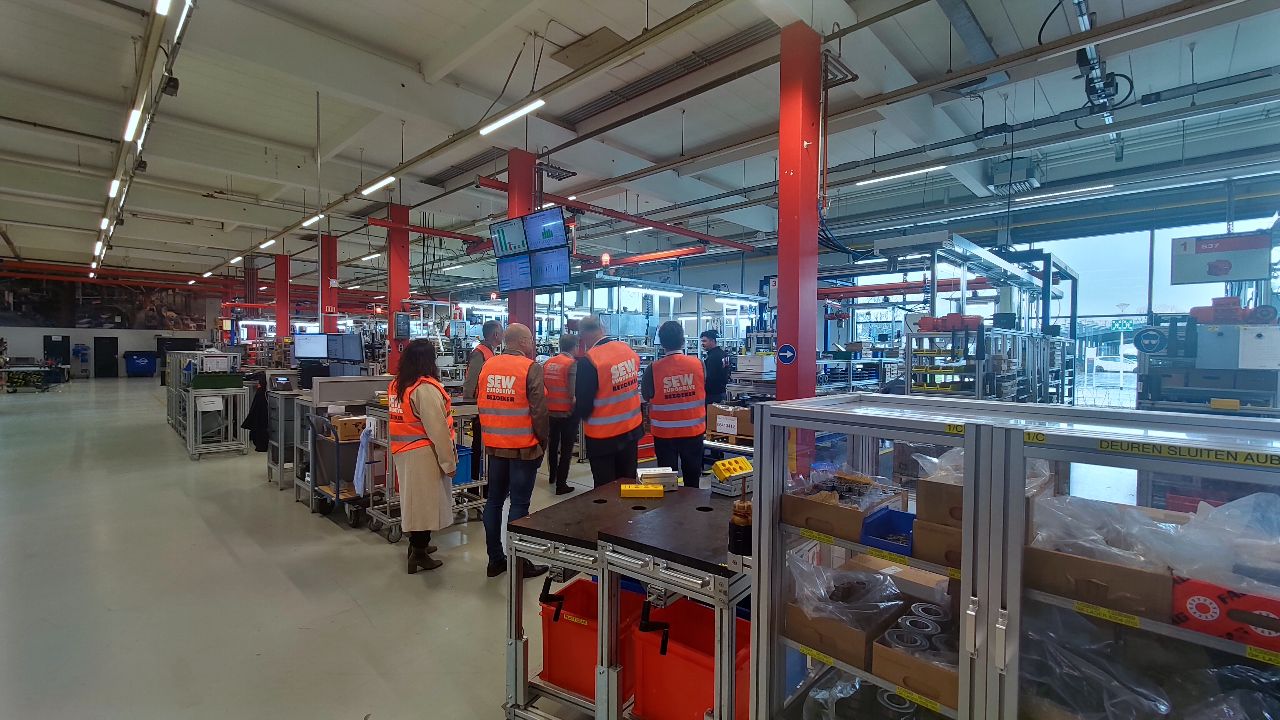Material planning drastically renewed: Demand Driven
What is interesting to companies like Boeing, SCA, British Telecom, Bosch and Merck about demand-driven material planning (DDMRP)? DDMRP promises shorter lead times in production, lower inventory in combination with a higher service level. But what is precisely wrong with material planning (MRP), that DDMRP is distancing itself from?
MRP planning started in the ’60s and was applied in the ’70s. In that period the competition was less heavy, the life cycles of products were longer and product offer contained less variation. Because we are currently dealing with more dynamic and fragmentation, the planning of inventories has become a real challenge.
Problems with MRP Planning
MRP planning is also called dependent demand ordering. This implies that everything that is needed from components and raw materials is dependent on the demand for the final product. So, also from every change in the demand forecast.
Internal bullwhip effect
Because nowadays the demand for final products shows huge variation, on a lower level in the production it’s often a mix of running and doing very little. This leads to the bullwhip effect. With every change in the needed amount of final products, orders are made in every level in the product structure.
This internal bullwhip effect leads to the typical known phenomenon of the bi-modal distribution; having too many not needed materials against not enough required materials (see the image below).

What’s the promise of DDMRP?
Demand Driven MRP promises that inventory buffers are formed on the places in the production structure or the supply chains where they protect the lead times. Buffers don’t pass along shocks, but intercept. Depending on the situation DDMRP promises the benefits listed below as average improvements.
|
Benefit |
Improvement to achieve |
|
Inventory reduction |
30% – 45% reduction on invested capital is on average achievable |
|
Lead time reduction |
It’s possible to achieve more than 80% reduction of the lead time. Included is a lower amount of work to do. |
|
Improved service levels
|
Delivery reliability can structural be improved on levels between 97% and 100% on time in full (OTIF). |
|
Proper applicability |
Intuitive and efficient with focused attention on the buffer items instead of on all MRP planned items |
|
Lower supply chain costs |
The adjusted flow leads to less urgency for ‘expediting’, less partial delivery’s, better use of the transport material, fewer shipments between warehouses. |
What is DDMRP?
Demand Driven MRP is the newly developed method for managing production and inventories. The method is focused on creating and keeping inventory flow. This method has it in common with the theory of constraints, focused on the maximization of the output of bottlenecks. Lean also focuses on flow to meet the customer demand. Demand Driven MRP combines the best of Material Requirements Planning (MRP), TOC, Lean, and Six Sigma.
With DDMRP the focus is on:
1. creating flow through the processes
2. lowering inventories
3. shorter lead times
4. higher delivery reliability
1. creating flow is achieved by putting inventory on places where it gives protection to variability. Every time that products have gone through the production process, money can be earned with the products. So, with more flow, more often money can be earned with the inventory (working capital). Flow is measured with the flow index of every raw material, component and the final product.
2. lowering inventory can be achieved in several ways:
1. placing buffers at places that are on critical points
2. placing strategic buffers of materials used in several products
3. placing buffers to protect the capacity of bottlenecks in the production against disrupted supply.
3.shorter lead times are accomplished since with shorter lead times, reacting to special customer requests can be more flexible
4. because of reacting flexibly to customer demand higher delivery reliability can be achieved with DDMRP.
Protecting capacity
To protect flow, attention should also be placed at bottlenecks occurring in the available capacity. In DDMRP the capacity of the following are taken into account when making calculations of the flow and buffers:
1. production means
2. transportation means
3. inventories
Buffer management
Crucial in protecting flow is determining the size of buffers. The following things are taken into account:
- lead time category
- variation category
- Type of item (company-specific classification)

DDMRP doesn’t have safety stocks but determines for every product the zones the inventory is in. These zones exist of a red, yellow and green zone. With each of these zones, the material planner can perform a few actions to manage the inventory. This is different from MRP, as it is focused on keeping the safety inventory.
With managing the inventory the planner can perform the following actions:
1. Do nothing; the inventory is on the required level
2. Ordering material
3. Lead time management for the ordered items based on the status of the buffer
4. Reprioritizing the existing orders
In general, a planner has less work to do with DDMRP because fewer notifications occur about needing to change the priority or volume of orders or releasing the orders. With DDMRP the attention is primarily focused on maintaining the buffers based on the variation in demand and supply based on changes in the average daily demand.
Interesting for who?
DDMRP is interesting for all companies making products and buying raw materials to deliver a final product to customers. It is great for medium sizes companies with a large portfolio of products or with products who are being made in various variations. DDMRP is specially made for companies who work with limited shelf life products as in the food and pharmaceutical industry. With shorter lead times it’s possible to produce more demand orientated. As a result, fewer products have to be destroyed, which leads to more available capacity for extra production.
Points of attention
To make optimal use of DDMRP it is most important to pull the right data from the systems. Comprehensive knowledge of ERP systems is needed, and how to store the data.


